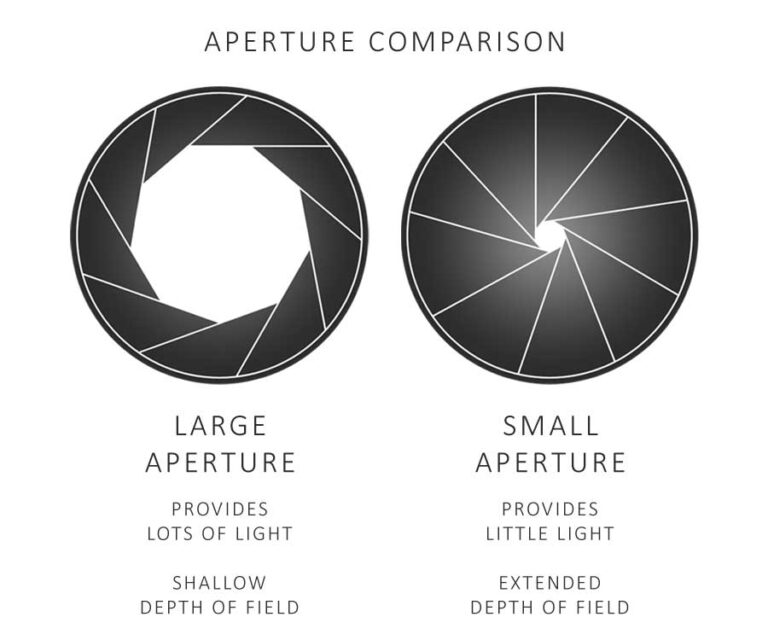

- #Big aperture and smaller aperture lens difference how to
- #Big aperture and smaller aperture lens difference full
Notice how similar they are in terms of perspective, focus and background blur. Below that, you see the photo I took a few seconds later with my Nikon D600 FX DSLR with the Nikkor 24-70mm f/2.8G lens, set to f/16. First, we see a photo I took with with my iPhone 6‘s back-facing camera. If you need convincing, just look at the example below. Smaller Sensor = increased depth of field (if identical subject size, physical focal length and physical f-number)ġ) Big vs Small sensor cameras – can they take identical photos?Īt the get-go, let’s just establish that you can really take identically-looking photos with two wildly different cameras if you choose your settings appropriately.Smaller Sensor = increased depth of field (if identical focus distance, effective focal length and physical f-number).Smaller Sensor = decreased depth of field (if identical focus distance, physical focal length and physical f-number).Three examples of how a smaller sensor influences Depth of Field.What happens when an object is “not in focus”.
#Big aperture and smaller aperture lens difference how to
How to compare DoF and field of view for cameras with different sensor sizes (crop factors).Big vs Small sensor cameras – can they take identical photos?.The strong points of Aperture have slightly fewer advantages, whereas the strong points have additional advantages.The implementation of Aperture can be employed to help decide the depth of field photograph, whereas the implementation of F-stop can be employed to help make certain the whole photo is in focus.The immense the number, the immense the Aperture, whereas, the elevated the F stop, the shorter light gets.Aperture is estimated in ratio to a circle, whereas F stops are estimated in numbers.The Aperture is the vent core of a camera lens where light breaks in, whereas the F Stop touches on the extensiveness of opening or closeness of the Aperture.Main Differences Between Aperture and F Stop An F/3.5 has more light going through than an F/5.6, where each stop on the lower end of the scale means a decrease of 1/3 the amount of light, while each stop on the upper end of the scale means an increase of one-stop, that is 1/2 less light or 2x less light. The higher the F-number, means less light will go through. The lower the F-number, the more light that can pass through. The F stop determines how much light can go through the lens and onto the sensor.
#Big aperture and smaller aperture lens difference full
Each full stop is double or half the previous measurement of 1.4, 2, 2.8, 4, 5.6, 8, 11. This element allows for various shapes or configurations.Īperture size will control the depth of field distance from the nearest to the furthest point in a photo that appears sharp and the amount of light entering a camera.Īperture is measured in F-stops. It can be utilized to help ensure the entire photo is in focus.Īperture size refers to the diameter of a circular disk that is placed in front of a camera’s lens and alters what light can enter. It can be utilized to help determine the depth of field photograph that appears tack sharp.

The high-rise the F stop, the reduced light gets. The sizeable the number, the massive the aperture. The F Stop mentions the wideness of open or closed the Aperture is for a specified exposure extent.Īperture is computed in ratio to a circle and can be anything from 0-32.į stops are computed in numbers, with lower numbers like 1.4. The Aperture is the slit core of a camera lens where light sets foot. Main Differences Between Aperture and F StopĬomparison Table Parameters of Comparison.


 0 kommentar(er)
0 kommentar(er)
